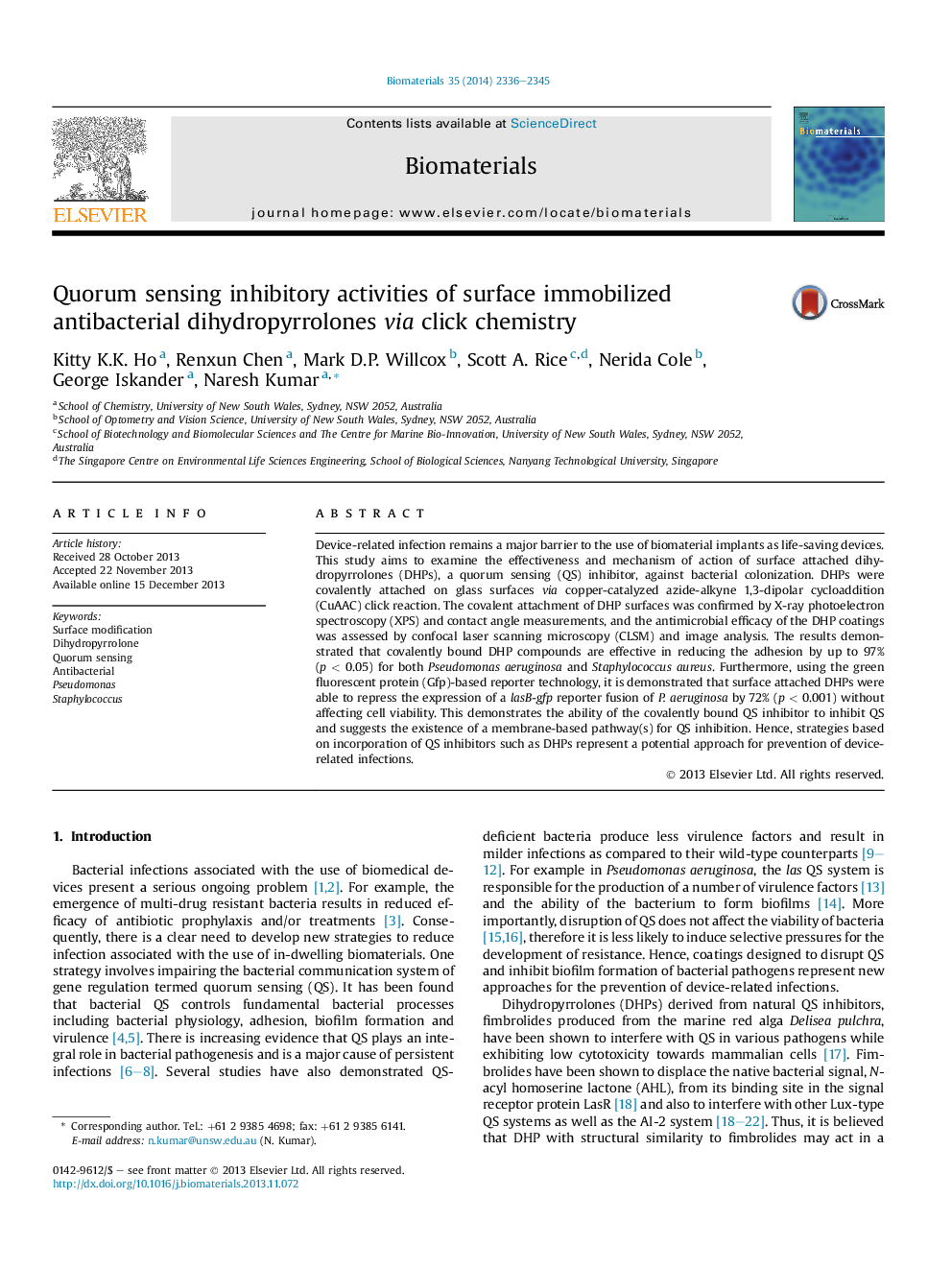| Article ID | Journal | Published Year | Pages | File Type |
|---|---|---|---|---|
| 10228406 | Biomaterials | 2014 | 10 Pages |
Abstract
Device-related infection remains a major barrier to the use of biomaterial implants as life-saving devices. This study aims to examine the effectiveness and mechanism of action of surface attached dihydropyrrolones (DHPs), a quorum sensing (QS) inhibitor, against bacterial colonization. DHPs were covalently attached on glass surfaces via copper-catalyzed azide-alkyne 1,3-dipolar cycloaddition (CuAAC) click reaction. The covalent attachment of DHP surfaces was confirmed by X-ray photoelectron spectroscopy (XPS) and contact angle measurements, and the antimicrobial efficacy of the DHP coatings was assessed by confocal laser scanning microscopy (CLSM) and image analysis. The results demonstrated that covalently bound DHP compounds are effective in reducing the adhesion by up to 97% (p < 0.05) for both Pseudomonas aeruginosa and Staphylococcus aureus. Furthermore, using the green fluorescent protein (Gfp)-based reporter technology, it is demonstrated that surface attached DHPs were able to repress the expression of a lasB-gfp reporter fusion of P. aeruginosa by 72% (p < 0.001) without affecting cell viability. This demonstrates the ability of the covalently bound QS inhibitor to inhibit QS and suggests the existence of a membrane-based pathway(s) for QS inhibition. Hence, strategies based on incorporation of QS inhibitors such as DHPs represent a potential approach for prevention of device-related infections.
Related Topics
Physical Sciences and Engineering
Chemical Engineering
Bioengineering
Authors
Kitty K.K. Ho, Renxun Chen, Mark D.P. Willcox, Scott A. Rice, Nerida Cole, George Iskander, Naresh Kumar,
